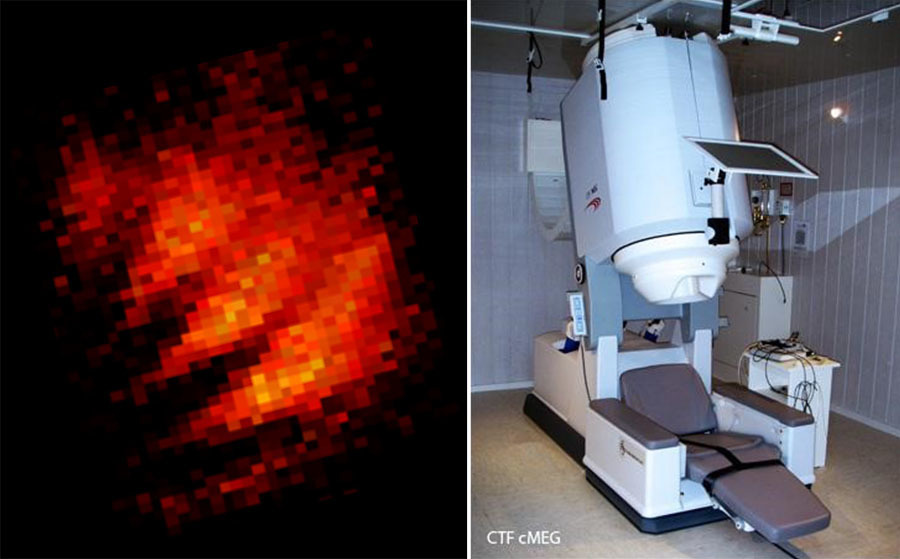Specialists from the Keldysh Institute of Applied Mathematics of the Russian Academy of Sciences and the medical faculty of New York University have developed a new method for diagnosing the body by studying its electrical activity. This was reported to RT in the Russian Science Foundation.
As part of the methodology, scientists subject a person to a magnetic encephalograph scan. Using this device, data on the electrical activity of the heart, brain, nervous system and muscles of the patient are recorded. On the basis of the obtained testimonies, a three-dimensional mathematical model is created, which allows you to identify various disorders in the body.
When working on this method, scientists recorded the activity of the nervous and muscle systems of ten volunteers aged 28 to 76 years. Each of them was required to conduct three seven-minute sessions in an encephalograph.
- Mathematical functional structure of the palm muscles (left) and CTF MedTech magnetoencephalograph (right)
As a result of processing the obtained data and subsequent calculations, the researchers created a 3D map of the electrical activity of the body, which was called a three-dimensional “functional tomogram”. According to scientists, this card can inform doctors about the signs of dangerous cardiovascular and neuromuscular diseases. It can also be used to accurately localize the pain of the patient.
“Using our method, it was possible to successfully reconstruct the three-dimensional functional structure of the brain, heart, neck muscles and hands. The obtained 3D models are in good agreement with the anatomical data, while they carry direct information about the electrical activity of the human body, ”said Mikhail Ustinin, project manager, deputy director of the Keldysh Institute of Applied Mathematics, Russian Academy of Sciences.
One of the features of this method is the ability to record and track data in real time. In this case, the procedure is non-invasive, that is, it does not damage the tissue. According to the authors of the study, this makes this type of diagnosis useful when testing various drugs, for example, drugs for epilepsy: the technology for tracking brain activity in real time will allow you to see how much the activity of neurons during an epileptic seizure has decreased.

